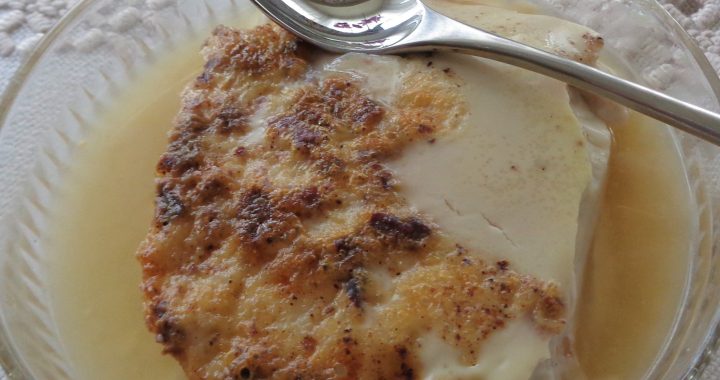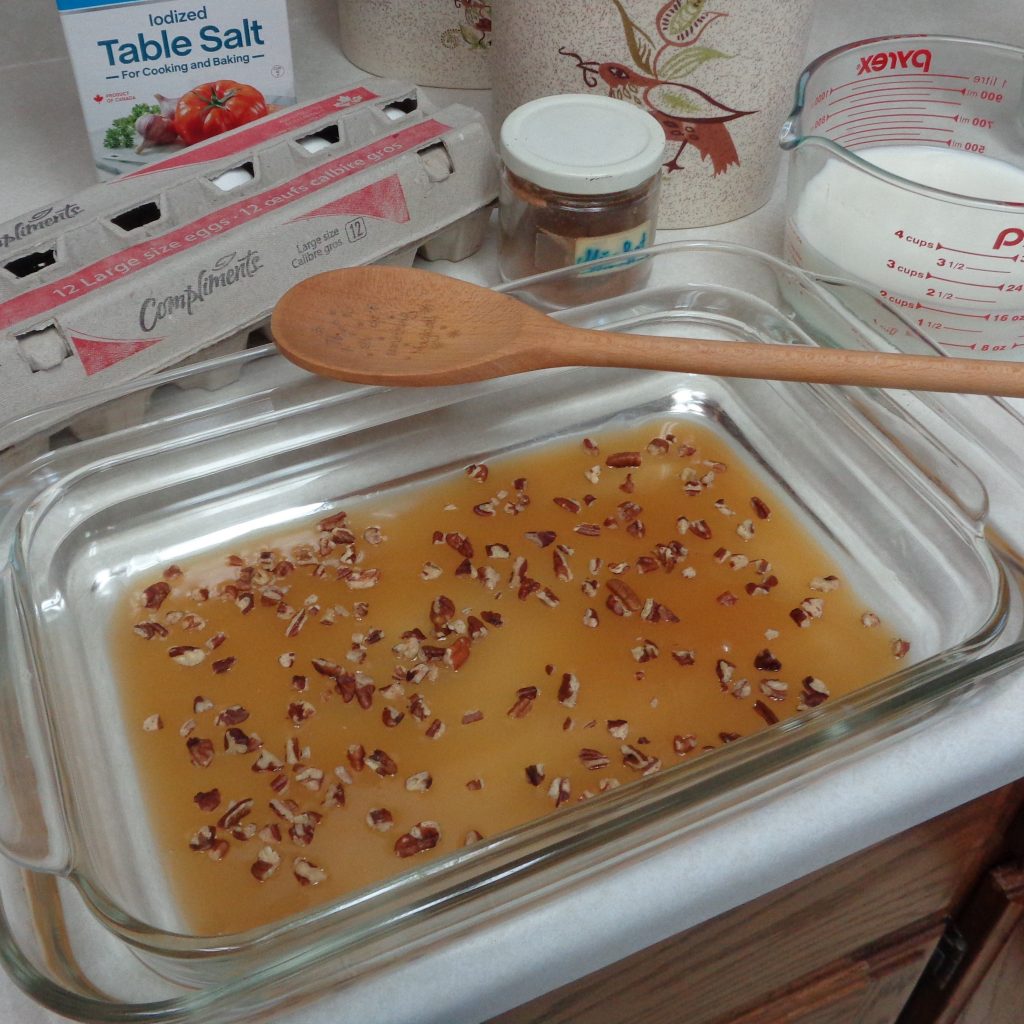Custard is most often thought of as an Imbolc dish, fresh milk being finally available. Here’s the catch, eggs would not have been available until around spring equinox. It is around that time birds have enough light to begin laying eggs for the new cycle of life. Any custards made between October and March would have used wheat or corn flour as the thickener. Today we don’t even have to think about things like that. Just pick up a carton around the corner.
Custard, a cooked mixture of milk and eggs, has been known to the culinary world since before the time of Ancient Rome. Medieval recipes called for milk or broth to be combined with the honeyed egg mixture and it was not uncommon for beef marrow or minced pork to be added to the sweet mixture, a practice not common today. Today’s garnish of a sprinkle of nutmeg comes from Britain while cinnamon was the spice of choice in Portugal.
My grandfather had a set of cups that he used to bake individual custard desserts and I have fond memories of a home filled with the sweet scent of nutmeg coming from the kitchen. Those cups passed to my mother and now sit in my kitchen, so it has become a bit of a family tradition. This version starts with a thin layer of caramel sauce and a sprinkling of chopped pecans as my step-mother can never get too many nuts.
You will need:
4 Tbsp. caramel sauce, cold
2 – 3 Tbsp. chopped pecans
6 eggs
1/2 cup sugar
3/4 tsp. salt
3/4 tsp. vanilla
4 1/2 cups scalded milk
Nutmeg for sprinkling on top
Comfort food nourishes both the soul and the tummy and opening your heart will aid
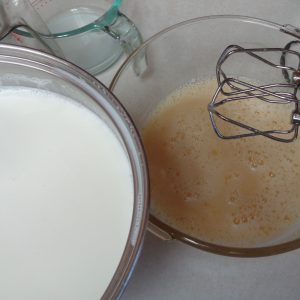 Preheat the oven to 375 degrees F. Prepare a 7 x 11 pan by spooning the caramel sauce in to the form and spreading it evenly around the bottom. Take the sauce directly from the fridge. It will be a little stiff and will need a little help getting fully distributed around the bottom. Sprinkle with nuts, pressing them down into the caramel. Put aside.
Preheat the oven to 375 degrees F. Prepare a 7 x 11 pan by spooning the caramel sauce in to the form and spreading it evenly around the bottom. Take the sauce directly from the fridge. It will be a little stiff and will need a little help getting fully distributed around the bottom. Sprinkle with nuts, pressing them down into the caramel. Put aside.
Scald the milk, in a pot, over medium heat. To scald means to bring the temperature up to just below boiling and then removing the milk from the heat source so before it boils.
Beat the eggs slightly along with the salt, sugar and vanilla in a container that can hold both the eggs and the milk. Substituting rum extract is also an option. It will changed the finished flavour and not be as traditional but it is an option.
 Begin slowing adding the scalded milk into the eggs a little at a time. Slowly, so that the hot milk does not cook the eggs. Larger amounts can be added as the eggs adjust but be sure to keep stirring as you pour.
Begin slowing adding the scalded milk into the eggs a little at a time. Slowly, so that the hot milk does not cook the eggs. Larger amounts can be added as the eggs adjust but be sure to keep stirring as you pour.
Transfer the mixture to the prepared form. Pouring it through a sieve will keep out any cooked bits of egg. Pouring slowly will help keep more of the caramel and pecans on the bottom of the form.
Sprinkle the nutmeg on top and place the 7 x 11 pan inside a 9 x 13 form and fill with warm water to the level of the custard.
Bake for 30 – 40 minutes or until the custard is firm and a knife inserted in the center comes out clean. Can be served hot or cold.
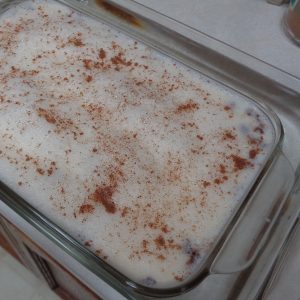 Honey or maple syrup can be substituted as sweeteners.
Honey or maple syrup can be substituted as sweeteners.
Very wealthy people, in times past, would also bake custard using freshly made almond milk at this time of the year. Milk being one of the food items given up during Lent.
The word custard come from the old French croustade. It meant a kind of pie and many cultures around the world have some form of custard tart or pie. Some sweet and some savoury.
Today custard is not necessarily connected to pie, It can be a creamy sauce for topping pudding/dessert, served hot or cold.
It can also, like my grandfather’s, be baked in individual cups and served warm as a satisfying end to dinner or as I remember it, a bedtime snack.
This recipe can be easily cut in half but we had a new grocery store opening where I live and milk and eggs were half price! That never happens, so I made the most of it.
Add an extra drizzle of caramel sauce before serving.
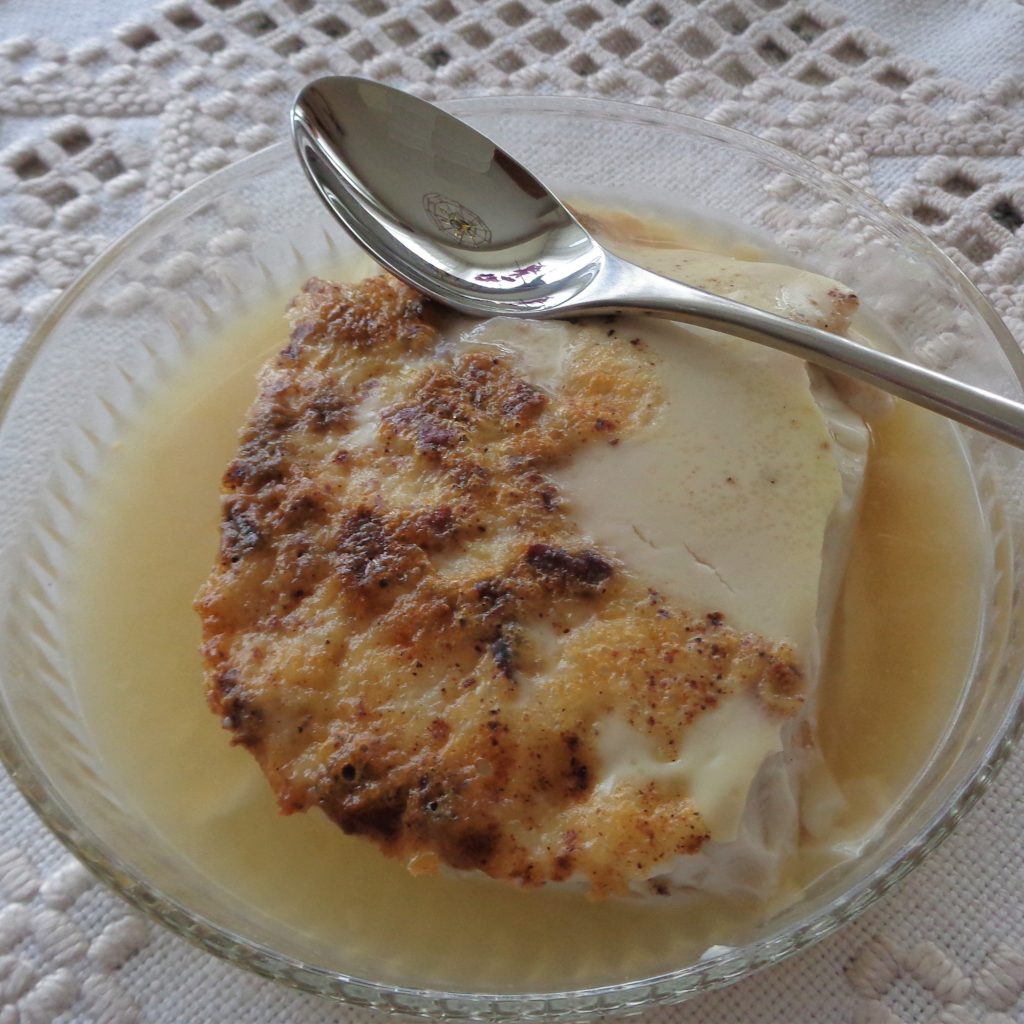 Baked Custard with Pecans and Caramel from My Kitchen Wand
Baked Custard with Pecans and Caramel from My Kitchen Wand

